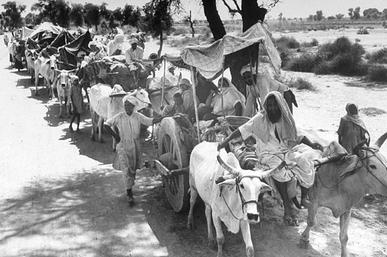
AsianOverland.net
Tour Guide - Itinerary
Asian Overland Sydney to London
Started 22/06/2022 Finished 21/06/2023365 Days ITINERARY
Day 110 date 09/10/2022AMRITSAR to JAMMU, INDIA
ASIANOVERLAND.NET SYDNEY TO LONDON DAY 110/318/22: AMRITSAR TO JAMMU, INDIA
August 1980 and “DAY 22. 9 October, 1980
3.30am - Gary got up & started off. Teena got up & made him tea - & woke up our poor long suffering courier. Ah.
Well it was a nice temple at Amritsar – everybody donned the scarf & headress – or hankies if so preferred.”
The Golden Temple at Amritsar is the principal Temple of the Sikh religion, which originated in the Punjab region of the Indian subcontinent around the end of the 15th century. It is one of the youngest of the major religions and world's fifth-largest organized religion, with about 25 million Sikhs.
We arrive early at the Golden Temple where there are always huge queues of followers, who are able to queue at the main entrance to receive free food which has been blessed at the Temple. We avoid the large queue, enter through the side entrance, and gain fast admission, as we bring free food along to give to the Temple and the priests, who in turn bless the food and give the blessed food to the multitude of queueing followers.
Guru Nanak (1469–1539), the founder of Sikhism, was born in the Punjab in present-day Pakistan (Punjab was split in the Partition of 1947). His parents were Punjabi Hindus. Nanak as a boy was fascinated by religion and spiritual matters, spending time with wandering ascetics and holy men. His friend was Mardana, a Muslim. Together they would sing devotional songs all night in front of the public, and bathe in the river in the morning. One day, at the usual bath, Nanak went missing and his family feared he had drowned. Three days later he returned home, and declared: "There is no Hindu, there is no Muslim".
Thereafter, Nanak started preaching his ideas that form the tenets of Sikhism. In 1526, Guru Nanak at age 50, started a small commune and his disciples came to be known as Sikhs. He made five major journeys, spanning thousands of miles, the first tour being east towards Bengal, the second south towards Andhra, the third north to Kashmir, Ladakh, and Tibet, and the fourth to Baghdad.
Sikhism teaches followers to transform the "Five Thieves" (lust, rage, greed, attachment and ego).
The Sikh religion developed and evolved in times of religious persecution, gaining converts from both Hinduism and Islam. Two of the Sikh gurus (1605) and (1675)—were tortured and executed by the Mughal rulers after they refused to convert to Islam.
After our visit to Amritsar and the Golden temple, we drive to Pathankot and then along the (disputed) India/Pakistan border to Jammu, the winter capital of the Indian territory of Jammu and Kashmir (disputed by Pakistan and also partly disputed by China).
Jammu is mentioned in the chronicles of Timur (r. 1370–1406), who invaded Delhi in 1398 and returned to Samarkand via Jammu. In the Mughal chronicles of Babur in the early 16th century, Jammu is a powerful state in the Punjab hills ruled by Manhas Rajputs. Mughal Emperor Akbar brought the hill kingdoms of the region under Mughal suzerainty, but the local kings enjoyed political autonomy.
When partition was announced by the British in 1947, the newly created line divided "British India" and the Sikh population into two halves. The Sikhs suffered organized violence and riots against them in West Pakistan, and Sikhs moved en masse to the Indian side leaving behind their property and sacred places of Sikhism. The reprisals on Sikhs were not one-sided. As Sikhs entered the Indian side of the new border, the Muslims in East Punjab experienced reprisals and they moved to West Pakistan. Before the partition, Sikhs constituted about 15% of the population in West Punjab that became part of Pakistan, the majority being Muslims (55%). The Sikhs were the economic elite and wealthiest in West Punjab, having the largest representation in West Punjab's aristocracy.
Between March and August 1947, a series of riots, arson, plunder of Sikh property, assassination of Sikh leaders and killings, were described by Tara Singh as "civil war" in Punjab. The riots had triggered the early waves of migration in April, with some 20,000 people leaving northwest Punjab. In Rawalpindi, 40,000 people became homeless.
When the partition line was formally announced in August 1947, the violence was unprecedented, with Sikhs being one of the most affected religious communities, both in terms of deaths, as well as property loss, injury, trauma and disruption.
Sikhs and Muslims were both victims and perpetrators of retaliatory violence against each other, causing about a million deaths of Sikhs, Hindus and Muslims. There were numerous rapes of and mass suicides by Sikh women, to avoid being taken captive. There was a mass exodus of Sikhs from newly created Pakistan into newly created India. The partition created the "largest foot convoy of refugees recorded in history, stretching over 100 kilometer long", with nearly 300,000 refugees consisting of mostly "distraught, suffering, injured and angry Sikhs".
Sikh and Hindu refugees from Pakistan flooded into India, Muslim refugees from India flooded into Pakistan, each into their new "homeland".
© This work is copyright. Apart from any use permitted under the Copyright Act 1968, no part may be reproduced by any process, nor may any other exclusive right be exercised, without the permission of Peter Searle, peter@portseavillageresort.com; 1980-2024.
Website built by Justin O’Dea www.webdeveloperdocklands.com.au





